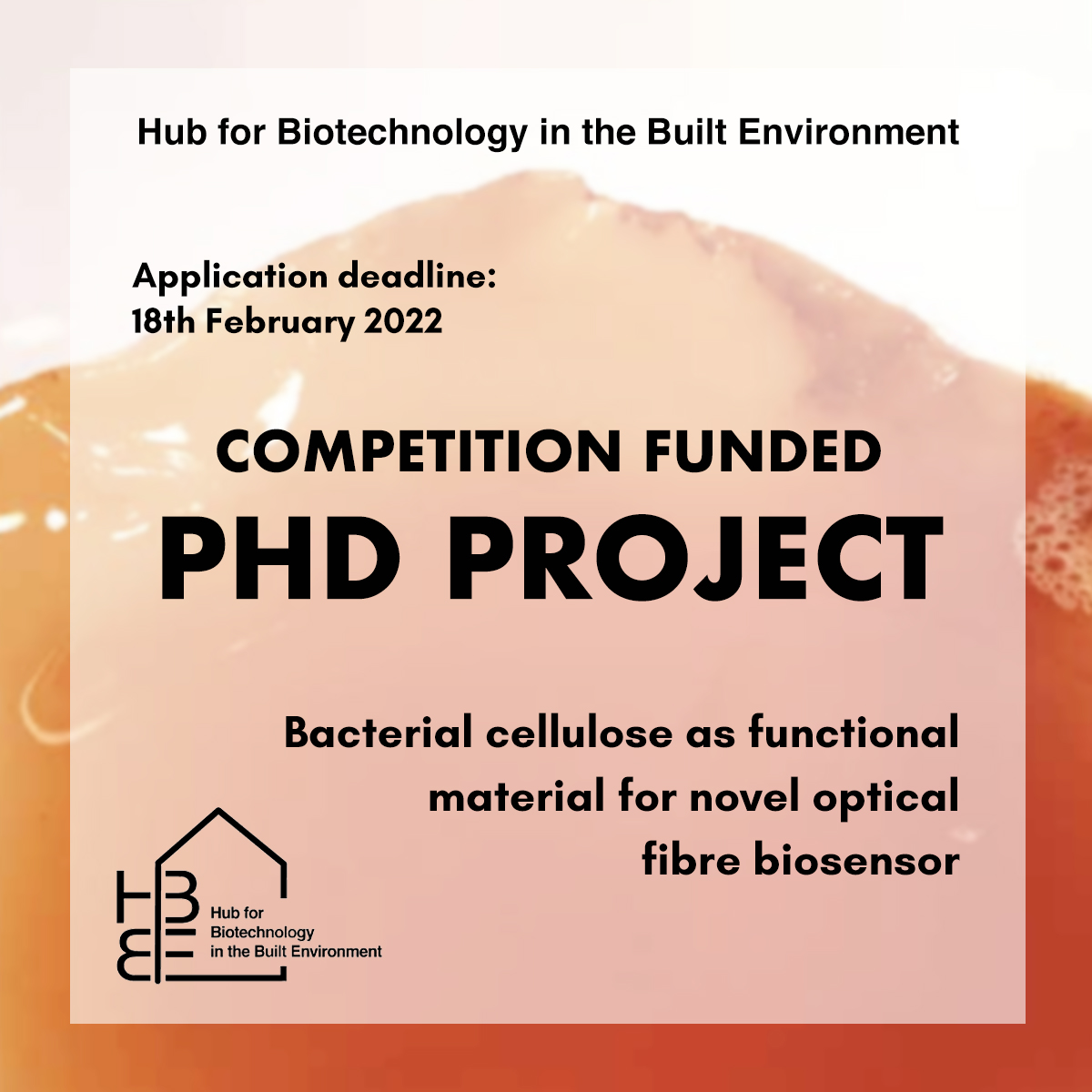
Join our team!
Competition Funded PhD Project (Students Worldwide)
Bacterial cellulose as functional material for novel optical fibre biosensor (Advert Reference:MRDF22/EE/BB/WU)
Overview
Cellulose is the most abundant biomaterial in the world and is already widely used in a range of manufacturing contexts. Though conventionally, cellulose is commonly found with other organic polymers such as lignin and hemicellulose to form commonly used biomaterials like wood, Bacterial cellulose (BC) is, in contrast, composed of ‘pure’ cellulose. Though many bacteria can produce cellulose, the Komagataeibacter genus is one of the most productive and can produce a pure BC pellicle. The BC material itself has high purity, crystallinity, tensile strength, biocompatability and biodegradability. The 3D porous network structure makes BC a superb scaffolding material which can incorporate other molecules to provide with various functionalities including antibacterial property and catalytic property.
Fibre optic sensors (FOSs) have been widely used in industrial and scientific applications. They are advancing rapidly along with optical communications and have become the “tentacles” of Internet of Things global network, where anything and everything in the physical world with identifiable characteristics can be equipped with sensors. They can measure and transmit data to dedicated platforms for storage, processing and analysis. FOSs are particularly suitable for biochemical sensing in aqueous, flammable, explosive, and corrosive biochemical environments. In order to achieve biochemical sensing capability, a thin molecule/biomarker capture layer can be coated on the fibre sensor surface. For example, we have used a silane method to treat a fibre sensor surface to immobilize antibody to selectively detect human chorionic gonadotropin, where a world record detection limit of 0.0001 mIU/mL has been achieved (Biosens Bioelectr, 145, 2019). One of the key challenges for fibre biosensor is the selectivity and compatibility of the thin film to the biochemical target. BC pellicle is a nature material which has good compatibility to biochemical material. By properly design molecule composition and microstructure, the BC film will have excellent specificity to target biochemical material and thus is an ideal functional material to fibre optic biosensor.
The aim of this project is to explore the application of BC as a thin film to coat on an optical fibre to develop novel high sensitivity optical fibre biosensor for real time monitoring of catalytic reactions.
Four objectives will be carried out:
1) developing a ultrahigh sensitivity optical fibre transducer with optimum design of microstructure profile, taper diameter, and functionalization thickness;
2) synthesizing BC membranes which incorporate appropriate enzymes molecules for enzymatic reaction monitor;
3) immobilizing BC film on the fibre transducer array with controlled thickness and enhanced adhesion to the fibre surface;
4) designing and validating the prototype BC coated fibre sensing system for the catalytic reaction. The success of the proposed research will deliver a novel functionalization material for a ultrahigh sensitivity fibre optic biosensor.
The principal supervisor for this project is Associate Professor Qiang Wu.
Closing Date: 18 February 2022
Funding notes: Each studentship supports a full stipend, paid for three years at RCUK rates (for 2021/22 full-time study this is £15,609 per year) and full tuition fees. UK and international (including EU) candidates may apply. Please also read the full funding notes (View Website) which include advice for international and part-time applicants.
Start Date and duration: 1 October 2022
Full Description: For more information please click here.
For informal enquiries, please contact Assoc Prof Qiang Wu and Assoc Prof Meng Zhang
